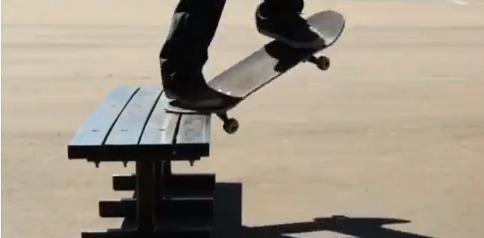Grind
Use a safe mortar and pestle to grind spices and seeds, compare coarse and fine textures, and learn about friction, force, and particle size.



Step-by-step guide to grind spices and seeds with a mortar and pestle
Learn how to crooked grind on a skateboard
Step 1
Wash your hands and clear a small workspace so everything stays tidy and safe.
Step 2
Choose one type of whole spice or seed to test for grinding.
Step 3
Put about one teaspoon of that spice into a small bowl.
Step 4
Use the magnifying glass to look closely at one whole seed and notice its shape and size.
Step 5
Draw or write one short note on your paper about what the whole seed looks like.
Step 6
Put one teaspoon of the spice into the mortar.
Step 7
Press down and twist the pestle gently 10 times to make a coarse grind.
Step 8
Spoon the coarse grind into a labeled bowl or plate.
Step 9
Put a fresh teaspoon of the spice into the mortar for a fine grind.
Step 10
Press the pestle firmly one time to feel how stronger force cracks the seed more.
Step 11
Grind the spice with steady circular motions for 60 seconds to make a fine powder.
Step 12
Spoon the fine powder into a different labeled bowl or plate so you can compare them.
Step 13
Rub a small pinch of the coarse grind and a small pinch of the fine grind between your fingers to compare texture and particle size.
Step 14
With an adult, wash and dry the mortar and pestle when you are finished.
Step 15
Share your finished creation on DIY.org.
Final steps
You're almost there! Complete all the steps, bring your creation to life, post it, and conquer the challenge!


Help!?
What can I use if I don't have a mortar and pestle or a magnifying glass?
If you don't have a mortar and pestle, use a clean small jar and a sturdy spoon or a rolling pin on a zip-top bag to press and twist for the 10 coarse twists and 60-second fine grind, and if you lack a magnifying glass use your phone camera zoom or a reading magnifier to inspect the whole seed.
My spice isn't getting fine after the 60 seconds — what should I try?
If the spice stays coarse after the 60-second circular grinding step, press a bit firmer, grind in shorter bursts while rocking the pestle, or dry the spice slightly and repeat the single firm 'press the pestle firmly one time' crack before continuing.
How can I adapt this activity for different ages?
For younger children, have an adult do the 'press the pestle firmly' step and guide the 10 gentle twists and the rubbing comparison while the child draws with the magnifying glass, and for older kids let them do the full 60-second fine grind, label bowls, time the grind, and write a short note to share on DIY.org.
How can we extend or personalize the experiment?
Extend the activity by testing and labeling three different whole spices side-by-side, photographing the magnified seed and your drawing to post on DIY.org, and using the coarse and fine grinds in a simple recipe like yogurt or toast to compare flavor and texture.
Watch videos on how to grind spices and seeds with a mortar and pestle
Learn how to grind on a skateboard with these tricks first
Facts about kitchen science and basic physics
🌶️ Crushing spices releases aromatic oils, so ground spices often taste stronger and smell more intense than whole ones.
🔬 Finer particles have more surface area and usually dissolve or react faster than coarse pieces.
🌡️ Grinding produces frictional heat — if you grind long enough your mortar or mixture can get noticeably warm.
🗿 Mortar and pestle are among humanity’s oldest tools — ancient versions were used to crush food and make medicines.
🥜 Some seeds (like flax) must be ground so your body can access their nutrients instead of passing them whole.
How do I guide my child to grind spices and seeds with a mortar and pestle?
What materials do I need to do this grinding activity with my child?
What ages is the spice-and-seed grinding activity suitable for?
What are the benefits of grinding spices with kids?


One subscription, many ways to play and learn.
Only $6.99 after trial. No credit card required

![How to Crooked Grind [Skateboarding Trick Tip]](https://img.youtube.com/vi/IyFLIh-zkiA/mqdefault.jpg)

